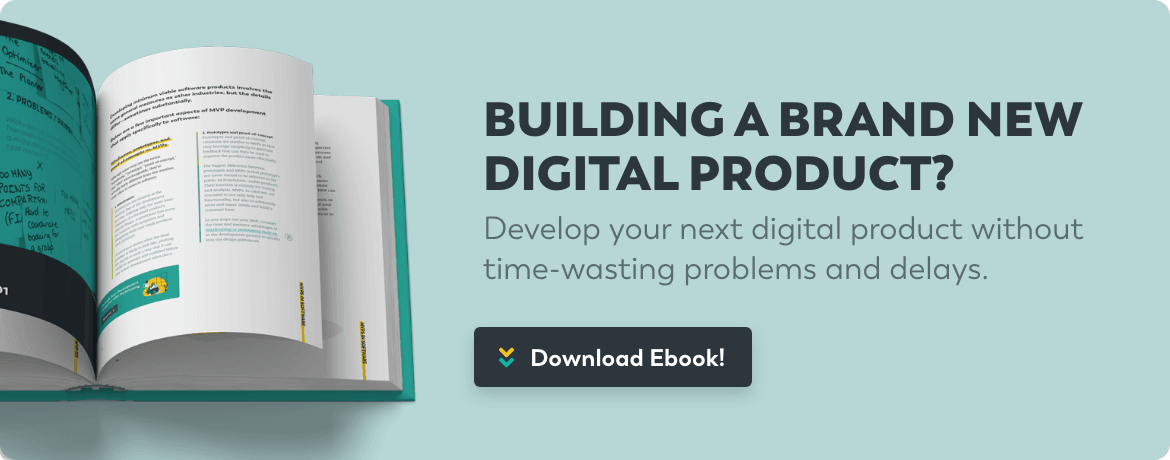Bootstrapping your startup or digital product can yield powerful results with time and hard work. In fact, for CEOs and founders with strong, creative ideas, bootstrapping a digital product can prove to be far more manageable than chasing after outside investors early on.
That being said, up to 82% of businesses that fail do so because of cash flow issues. Clearly, it pays to know both when to bootstrap your business and how to do it as well.
What bootstrapping your business is all about
Bootstrapped businesses take a longer, quieter path to profitability and growth than those that seek venture capital or other forms of early investor funding. When a product is bootstrapped, the same principles apply, but they’re laser-focused on the critical stages of the product’s design, development, and ultimate deployment.
Here are the basic advantages of bootstrapping your business over other approaches:
Retaining control
Among many distinct advantages inherent to bootstrapping is the ability to keep control of your business and product, especially in its earliest stages of development. By bootstrapping your product ideas and business plans, you can ensure that the ideas you put into action at your company are the ones you believe in.
Bringing in investors and outside funding creates unique constraints for your business to deal with. You cannot necessarily count on potentially profitable ideas being deemed acceptable by third parties who have a say in how you run your business. Bootstrapping any part of your business is largely about maintaining control over your company’s growth trajectory.
Focusing efforts
Although attracting investors for your startup may make sense in some cases, many businesses find it advantageous to center their efforts on bringing in customers and boosting revenue. Especially when your company first embarks on bringing a new digital product to market, it helps to concentrate creative work and resources on generating cash flow.
Conserving capital
By bootstrapping your business plans and products, it’s possible to preserve cash and allocate revenue in the right ways. This counts at any stage of your business’s development. Bootstrapping product design and deployment can also mean keeping debt out of the equation entirely, which can help a small company grow without significant payment commitments early on.

5 strategies to help you bootstrap your business
Your reasons for bootstrapping your business are important, but so is the way you go about doing it. The strategies below can have a lasting impact on your next product launch as well as the overall success of your company:
1. Use effort and innovation to cut costs
Testing a large variety of concepts quickly can yield exciting results for bootstrapped businesses. Moving your idea out to market fast is a great way to beat out bigger competitors as a relatively small player in your industry.
The initial glut of work and creative thinking you put into developing your ideas can turn into a solid niche carved out for your company that few competitors can replace.
2. Break a big idea into smaller parts
Approaching consumer interests as a shifting hierarchy of needs allows a bootstrapped business to set clear goals for new products. However, once you’ve identified a reasonable “big idea” to focus on, it may be wise to break it down a bit further.
This concept is clearly embodied in the design and deployment of minimum viable products (MVPs) as these must be limited in scope to be effective. When bootstrapping your digital product, it helps to tackle the most important part of your planned market offer first and build it out with time, feedback, and revenue as you grow.
3. Try trade credit
Although bootstrapping usually carries a connotation of keeping credit at bay, trade credit—flexible payment terms offered by suppliers and development partners—can be helpful for businesses on a tight budget.
By leveraging a permissive payment plan that allows you to pay for materials or services 30 days (or more) after you receive them, you can access and allocate your capital more freely in the short term.
4. Build an audience first
Bootstrapping is often applied to the financial side of product and business development, but the marketing facet of your operation can be bootstrapped as well. When it comes to mapping out your product’s future, creating an audience of willing customers is especially important. By developing your audience as early as possible, you can ensure that your product idea has a market even before it’s fully developed.
5. Partner with an industry expert
Having an expert at your side as you bring your digital product idea to life can drastically improve your chances of succeeding at market. Seasoned experts can advise you on common mistakes others have made in your industry, potential pitfalls worth avoiding, and untapped market segments you might not have initially considered.
Getting bootstrapping right
VeryCreatives works with brands at all stages of growth to make their business goals a reality. As a digital product agency, we provide a complete solution for companies looking to bootstrap their next big product.
Our experts understand the intricacies of product design and the factors at play in keeping fledgling businesses afloat throughout their launch phases. Reach out today to learn how we can help make your product vision a profitable success.
